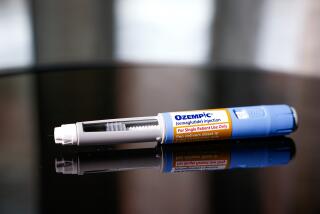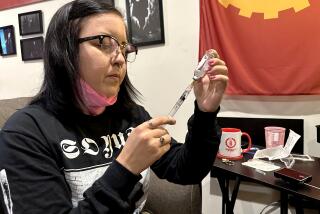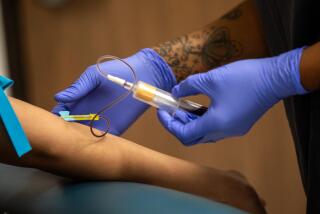Free Diabetes Screenings to Help the Needy
- Share via
Dr. Martha Gonzalez knows that education can help a diabetic live a healthier life. On Saturday, Gonzalez, director of the diabetes clinic at Ventura County Medical Center, provided free diabetes screenings to low-income people near Oxnard’s La Colonia neighborhood.
The clinic was the first in a series of free monthly screenings at the Magnolia Family Health Center on Magnolia Avenue, and Gonzalez and the other volunteers from local health care facilities saw about 20 people.
Gonzalez, who graduated from UCLA with a master’s degree in public health, says the clinics are an easy way--and in some cases the only way--for people who suspect they have diabetes to get checked out and, if necessary, begin to make changes in their life to keep their disease under control.
“I felt compelled to have a free screening because I see so many patients at the diabetes clinic at Ventura County Medical Center who don’t come back because they can’t afford it, and it really kind of breaks my heart,” Gonzalez said. “I know they’re out there, their blood sugar needs to be controlled, and they don’t have the money to pay for it.”
The minimum cost for a diabetes work-up elsewhere is about $40, and medication can cost almost $20 per day. Checkups at the Magnolia clinic are free, however, and Gonzalez says local pharmacies will discount medications for clinic patients.
If the disease goes unchecked, it can lead to blindness, kidney failure and, as in the case of Gonzalez’s grandmother, amputation.
“I see patients who come in blind in one eye and they didn’t even know they have diabetes,” said the doctor. “You don’t have to be blind or hooked up to a machine to clean your blood.”
Gonzalez’s 72-year-old mother also has diabetes, but due to education, proper diet and exercise her mother is healthy, Gonzalez said. “She still sews my clothes, and the earlier diagnosis and treatment made the difference,” she said.
Gonzalez chose the Magnolia center for the diabetes clinic because the disease has a high prevalence in the primarily Latino clientele already served there.
“It varies by age, but by 45, 1 in 4 Latinos is diabetic,” Gonzalez said. By age 65 the prevalence increases to 1 in 3. The disease shows up in Native Americans with similar frequency: 1 in 2 by age 50.
In addition to having a genetic predisposition to the disease, the Latino population is experiencing increased obesity, Gonzalez said. And obesity, no matter the race, is not good for someone with diabetes.
“Education is so important to helping them understand diabetes,” Gonzalez said. “For me the clinic is very relieving. I can see patients and give them as much as I can and know they are learning about their disease.”
More to Read
Sign up for Essential California
The most important California stories and recommendations in your inbox every morning.
You may occasionally receive promotional content from the Los Angeles Times.










